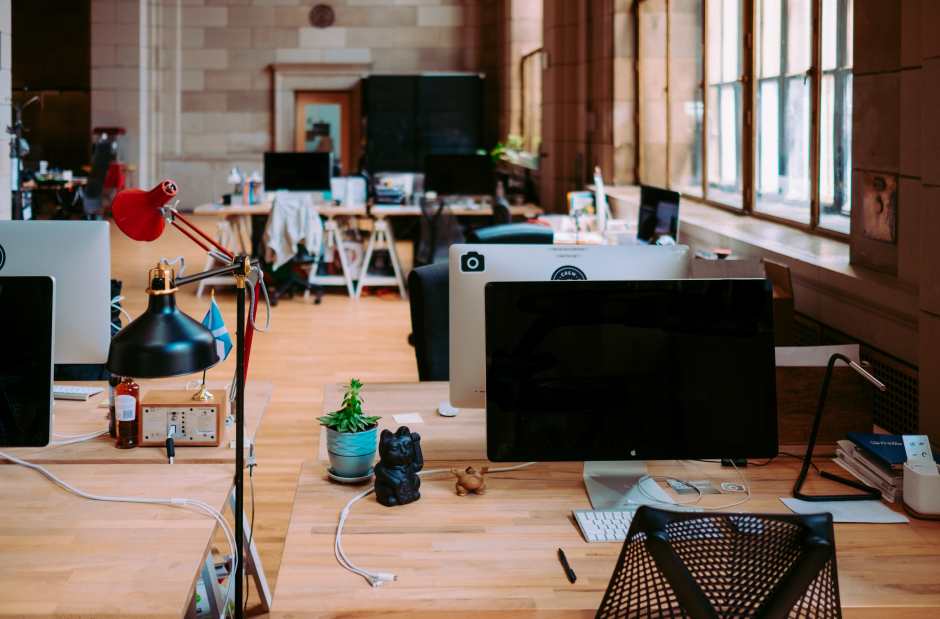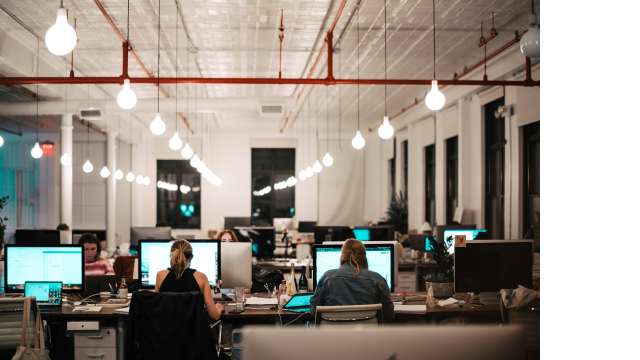Space usage has always been a priority for facility managers and company stakeholders. However, recent global events have forced these same business leaders to reaccess the value they put on their brick-and-mortar spaces.
Planning and measuring space utilization is an important part of managing your organization's resources as well as providing a safer space for employees and visitors.
What is space utilization? #
Space utilization is the method of measuring the size of your facility and incorporating occupancy data to understand how your facility is used, including movement, density, and hot spots.
Space utilization may not be a front-of-mind thing for a lot of businesses, but as workflows shift toward a less centralized, more hybrid model, it can have one of the greatest impacts on your security and overhead.
The best way to think of space utilization is how your space enables your staff. Office behaviors like how people get in, desk locations, common areas, and where most of the foot traffic happens are just some starting points. From there, you can get into density maps, hotdesking, capacity management, and a plethora of other metrics.
Suffice to say, space utilization should be at the core of all planning for physical locations, whether they be a hybrid office or multibranch expansions.
Important space utilization metrics #
Raq square footage vs usable square footage – The total, technical square footage of your space and the functional square footage. (Things like entry and bathroom areas may not be considered “functional” for space utilization purposes).
Occupancy – The total number of people within a workplace at a moment in time.
Space utilization rate – The number of employees divided by total workplace capacity. For example, 125 employees in a space meant for 150 puts you at an 83% utilization rate.
Daily peak utilization by space – The maximum number of individuals entering a specified area at any point in time.
Average peak usage – A figure incorporating both staff and visitors numbers at daily peak times averaged over a longer time frame (for example, one week).
High traffic areas – This figure is used to identify areas that receive the highest footfall and density of visitors in relation to the rest of your premises.

Keeping spaces safe and secure #
COVID-19 has changed how many organizations plan to use and utilize their spaces. Some are choosing a worker-friendly hybrid model, where staff can come to the office if they want to or are comfortable doing so. Others are completely replanning their facilities to support social distancing standards.
These new goals for how spaces are used can drastically change space utilization strategies. A space utilization analysis can help you to implement social distance measures, plan for variable staff occupancy, create effective cleaning schedules, and manage workflows to keep occupancy at a safe level around the clock.
This in turn creates a more comfortable environment for workers, helping to boost morale and loyalty towards your organization. The purpose of any space utilization strategy is to create harmony rather than finding a way to reach 100% utilization.
Max utilization isn’t necessarily a good thing, as it leaves little room for flexibility. Fitting the maximum number of working staff into your spaces while maintaining distancing goals may look great for your bottom line, but can negatively impact workflows in more subtle ways.
Something that is easy to overlook in space utilization strategies is irregular space use. Things like prospect meetings, client visits, board meetings, or group lunches may not happen every week or month, but your space should support such impromptu events.
Good space utilization will promote a harmonious workspace while enabling the unique flexibility needs of your business.
Discovering revenue-generating opportunities #
Codifying your space utilization strategy and gathering the data to back it up can deliver tangible bottom-line impacts.
Starting in quarter 2 of 2020, overall commercial space usage saw a steep and sudden decline. Mid 2021 is beginning to see a modest rise, but overall the amount of commercial space being used by businesses is the lowest it’s been in years.
This supports the current trends of remote work, with some reports showing that more than 40% of the American workforce was remote at the end of 2020. This emphasis on remote work made many businesses owners take another look at how much commercial real estate they had on their hands. Naturally, as remote work grew, the savvy businesses downsized their physical footprint to suit the new needs of their staff.
The current demand for space consolidation is encouraging businesses to adapt their real estate for a hybrid workforce that includes remote, on-site, and mixed-use employees. This allows employers to maintain a smaller commercial footprint, offering positive impacts to year-over-year bottom lines, including:
- Smaller rent payments
- Lower electricity bills
- Fewer on-site technology needs
- Fewer people using on-site amenities (snacks, drinks, etc)
Improve space utilization with real-time insights #
Having a firm grasp on space utility will help you to get the most out of your premises while improving and enhancing your facility management capabilities. As a result, you can make more cost-effective decisions that don't compromise your operations or the safety of employees.
Kisi's Capacity Management feature is a great way to gather key space utilization metrics while securing your space and is an easy starting point for any space utilization strategy.

Scott Mitchell
Content marketing strategist with specializations in IT and managed services.


